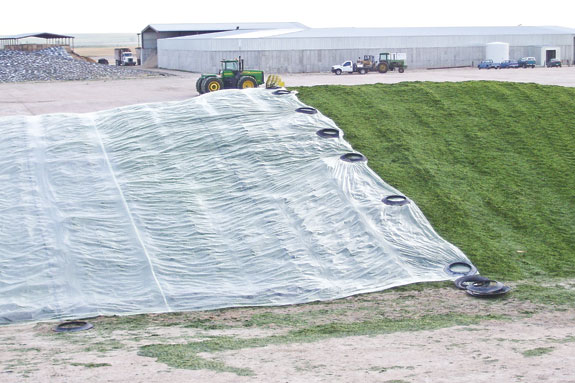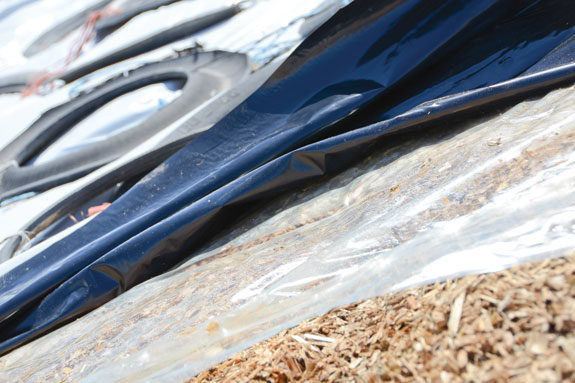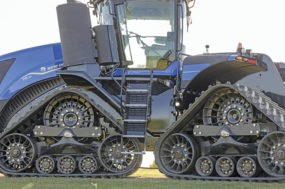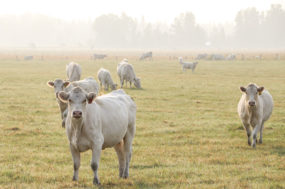As spring planting gets underway, now is a perfect opportunity to evaluate last year’s silage management plan.
Evaluation of last year’s game plan and stored silage provides insight into possible areas for improvement and ways storage methods can be adjusted.
Storing silage is a complex process with many inputs that influence the outcome. One such input that can influence the success or failure of a silage crop is the products used to cover and protect it from the detrimental effects of oxygen.
The performance of these products should also be taken into account during evaluation and planning. Visual quality checks and submitting routine samples to a laboratory also deliver results as to the level of protection your covering products are delivering.
During evaluation, producers should evaluate how covering products perform based on their ability to:
- Block oxygen from entering the silage pile or bunker
- Protect the inputs and silage investment from spoilage
- Maintain feed quality
- Provide an optimum environment for fermentation
If evaluation uncovers problem areas like surface spoilage and dry matter loss, Keith Bolsen, Professor Emeritus and silage expert at Kansas State University, highlights the addition of an oxygen barrier film as one option to use when covering silage bunkers or piles.
“During the last two years the United States stored over 107 million tons of corn silage. Of that stored silage, 82 to 84 percent was kept in bunkers or piles with an average depth of around 12 feet.
This resulted in 18 to 22 million tons of corn silage annually falling within the top three feet – which is most vulnerable to the harmful effects of oxygen.

An oxygen barrier film allows producers to cut losses in those top three feet by 50 to 75 percent over the traditional methods of sealing bunkers or piles.
And it’s important to select a plastic film you know will do the job,” comments Bolsen.
The addition of an oxygen barrier film is only one such way silage management and storage plans can be altered to achieve and maintain quality silage.
During evaluation, producers should not only ask themselves questions about the producer-assessed performance of a product, but also about the method in which their plastic covering is manufactured, the quality of materials used and, most importantly, research testing conducted on the product.
Answers to these questions provide information about what value a product can deliver to their bottom line when it comes to silage storage.
Quality materials
The true quality of a plastic covering is the combination of raw materials and the method used to manufacture it.
All plastic covering is not created equal. In fact, two different brands of plastic covers placed side by side may look identical; however, beyond what the naked eye can see, each plastic is composed of a specific blend of ingredients.
Quality barrier materials give the plastic covering great oxygen-blocking properties, which is important when it comes to stopping oxygen from permeating silage and causing spoilage or dry matter losses.
Research-proven
With numerous silage covering products on the market, it’s important for producers to compare available industry research, as well as fellow producer experience with products.
Farm trials, independent studies, and university research all provide insight to silage covering product performance, and producers should take into account these results when considering products for covering silage.
Research results are a powerful tool when determining if a covering product will deliver on what it has promised.
Requesting research data and producer testimonials to back up the covering product is a must when it comes to sorting through all the products available on the market and finding which one will fit the producer’s silage management goals.
Additionally, data from oxygen transmission rate (OTR) tests will prove how much oxygen a plastic will allow to pass through the material.
When it comes to testing oxygen transmission rates, it is essential to use a standardized testing procedure operated by a certified independent laboratory with known parameters.
Quality silage covering has been proven in research trials to offer improved results in a wide range of crops and situations and has the research to back it up.
Since it is imperative to keep oxygen from permeating and spoiling silage, knowing a product is proven to offer improvement and maintain feed quality is important when purchasing silage covering.
Remember, all silage covering products are not made equal. If you are going to spend more time and money protecting your silage, make sure there is clear evidence your invested dollars will bring a return.
Conclusion
Although choosing a covering method is only one piece of the overall silage management puzzle, it is an important piece.
While evaluating silage and debating options for silage covering purchases this spring, keep in mind that although plastics may appear the same to the naked eye, how the covering performs on-farm and in research trials is a true test if it will protect valuable feed investments in the end. FG
PHOTOS:
TOP: Storing silage is a complex process with many inputs that influence the outcome. The addition of an oxygen barrier film is one way silage management and storage plans can be altered to achieve and maintain quality silage.
BOTTOM: Quality barrier materials give the covering great oxygen-blocking properties, which is important to stopping oxygen from permeating silage and causing spoilage or dry matter losses. Photos courtesy of Silostop.











